-
Home
- Technical information
Technical information

- Competence Centre for Artificial intelligence and Big Data
- Artificial intelligence (AI) and big data are currently regarded as key technologies of the future. While offering a wide range of new opportunities in safety and health at work, these technologies also involve a number of risks. Specifically ...
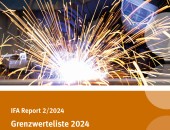
- Occupational exposure limit values (OELs)
- Occupational exposure limit values are an important tool for the protection of employees from risks to their health and safety due to hazardous substances. According to Art. 2, Sec. 8 of the German Hazardous Substances Ordinance (GefStoffV), the ...

- Competence Centre for Climate Change and Occupational Safety and Health (KKA) at the IFA
- Background Climate changes caused by global warming present the occupational safety and health community with growing challenges. To fulfil its prevention mandate, the German Social Accident Insurance works towards ensuring a safe working ...
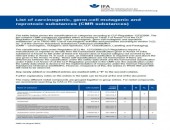
- List of carcinogenic, germ-cell mutagenic and reprotoxic substances
- The list (as of June 2025) contains CMR substances – also referred to as CMR substances (carcinogenic, mutagenic and reprotoxic) – which are classified as carcinogenic, mutagenic or reprotoxic according to Table 3 of Annex VI to Table 3 of Annex ...
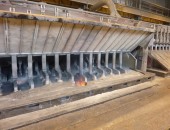
- Electromagnetic fields: key topics and projects
- Electromagnetic fields are generated wherever a voltage is present or current flows. Employees working at electrical equipment and installations can therefore always be assumed to be exposed to electromagnetic fields. The exposure of office workers ...
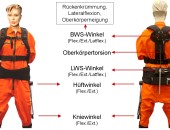
- Ergonomics
- The term "ergonomics" is formed from the Greek words "ergon" (work) and "nomos" (science, law). It refers to the science of human work, i.e. the ideal adaptation of work to the characteristics and abilities of the working human being. The ...

- Industrial Security
- Functional safety components protect life and health when working on plants and machinery. For instance, a safety locking function can prevent a safety gate to a hazardous zone of a plant or machine from being opened. To ensure that safety ...

- Competence Centre for Climate Change and Occupational Safety and Health (KKA) at the IFA
- Background Climate changes caused by global warming present the occupational safety and health community with growing challenges. To fulfil its prevention mandate, the German Social Accident Insurance works towards ensuring a safe working ...
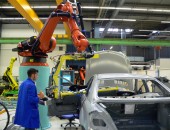
- Collaborative robots (COBOTS)
- Collaborative industrial robots are complex machines which work hand in hand with human beings. In a shared work process, they support and relieve the human operator. One example: a robot lifts and positions a heavy workpiece whilst a human worker ...

- Noise
- Noise is undesired sound that can cause nuisance or harm to health. Sound may be perceived as a nuisance and disturbing even at relatively low sound pressure levels. This in turn may cause stress reactions, which have a negative impact on workers' ...
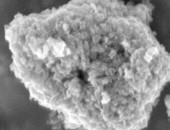
- Ultrafine aerosols and nanoparticles at the workplace
- Together with biotechnology and information technology, nanotechnology is regarded as one of the driving forces behind a new industrial revolution which will impact upon the lives of all people in various ways. According to estimates, nanoscale ...
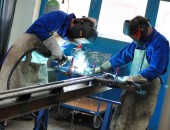
- Optical Radiation
- To many people, the term "radiation" has negative connotations. The hazards of radioactive radiation are known; radiation from mobile phones is a cause for concern. In physics, the term "radiation" is much more general and refers to the dissipation ...

- The REACH Chemical Regulation and occupational safety and health
- REACH (Registration, Evaluation, Authorisation and Restriction of Chemicals) is the regulation underpinning chemicals legislation in the European Union (EU). REACH has harmonized EU legislation governing chemicals throughout Europe. REACH was ...

- Reference materials for workplace air measurements
- Reference materials are becoming increasingly important for workplace air measurements as they are absolutely essential for calibration and quality control processes, as well as for verification of the accuracy and reliability of analytical ...
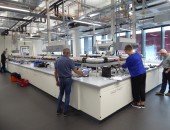
- Proficiency testing at the IFA
- Since 1989, the Institute for Occupational Safety and Health of the German Social Accident Insurance (IFA) has been providing proficiency testing (PT) schemes for laboratories and measuring institutes worldwide. PT schemes are an important means of ...
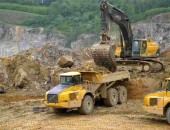
- Whole-body and hand-arm vibration
- The effects of vibration upon human beings may range from annoyance and a deterioration in performance, through the endangering of health, to actual harm to health. Workplace exposure of human beings to vibration is classified as whole-body or ...
- Virtual reality in human-system interaction
-

- Work 4.0: New challenges for prevention
- Digitalization of the world of work, or "Work 4.0", places new demands upon occupational safety and health. Networking, reachability, monitoring by computers and information technologies, and the closely linked intensification of work, are topics ...

















